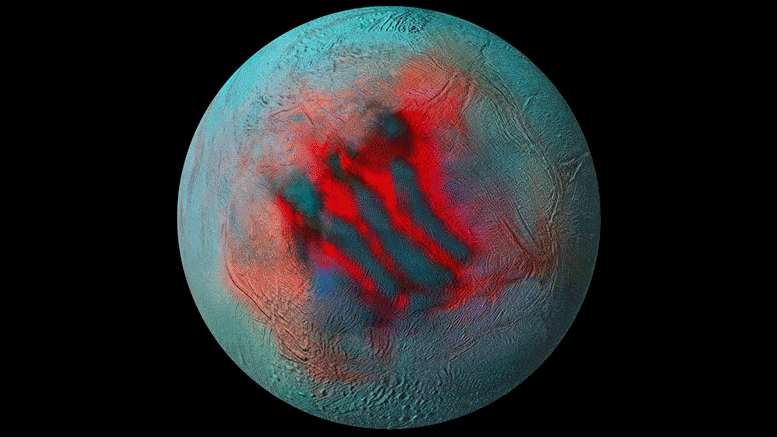Scientists have found that the surface of Enceladus is apparently rich in phosphorus, a key component for sustaining life.

[Translation by Dr. Moshe Nachmani]
The search for extraterrestrial life has become more interesting now, after a group of researchers led by Dr. Christopher Glein (Christopher Glen) from the Southwest Research Institute (Southwest Research Institute) found new evidence for the presence of an important chemical building block for the development of life on the surface of one of Saturn's moons, a moon named Enceladus (Enceladus). According to a new computational model, this moon's ocean should be quite rich in dissolved phosphorus, an essential component for the development of life as we know it.
"Enceladus is one of the main targets in humanity's search for life in the solar system," said the lead researcher, a leading expert on extraterrestrial oceanography. He is a co-author of a recently published paper describing the current study in the journal ScienceProceedings of the National Academy of Sciences (PNAS) . "Over the years since NASA's Cassini space probe visited the Saturn system, we have been repeatedly amazed by the discoveries made possible thanks to the information collected by the probe." The Cassini mission identified and analyzed samples of ocean water found beneath the surface of the moon, when plumes of ice crystals and water vapor burst out of cracks in the moon's icy surface toward space. "We learned that these mutations contained almost all the basic components required for the development of life as we know it," said the lead researcher. "Although the essential biological element phosphorus has not yet been directly identified, our team has discovered evidence of its availability within the ocean beneath the moon's ice sheet."
One of the most significant findings in planetary science in the last twenty-five years is that worlds with oceans that lie beneath an ice sheet are common in our solar system. The icy moons of large planets, including Europa, Titan and Enceladus, as well as more distant moons such as Pluto, are all examples of such worlds. Worlds with oceans on the surface, like Earth, must be within a narrow range of distances from their sun, in order to maintain a temperature suitable for the existence of liquid water on the outer surface. Worlds with internal oceans, on the other hand, can be found at greater distances, a fact that significantly increases the expected number of such worlds that support life throughout the galaxy.
"The search for extraterrestrial life in the solar system has changed its focus, when we are now looking for the building blocks of life, including organic molecules, ammonia, sulfur compounds as well as the chemical energy required to support life," explains the lead researcher. "Phosphorus is a special case since previous studies suggested that it may be rare in Enceladus' ocean, a fact that reduces the chance of finding life there." Phosphorus in the phosphorylated configuration (phosphates) is essential to all living things on Earth. It is essential for the production of DNA as well as RNA, for energy-carrying molecules (ATP), to cell membranes, bones and teeth of humans and animals, and even to all plankton-type marine microorganisms.
The researchers performed thermodynamic and kinetic simulations simulating the geochemistry of phosphorus based on insights gained from the Cassini mission into the seafloor in Enceladus' ocean. During their research, they developed the most detailed geochemical model yet of the mechanism explaining how seafloor minerals dissolved into Enceladus' ocean, and predicted that phosphorus minerals should be most soluble there. "The geochemistry we studied has an elegant simplicity that allows for the presence of available dissolved phosphorus, in concentrations close to and even higher than those found in the seawater of the oceans that exist today on Earth," said the lead researcher. "The significance of this finding for astrobiologists is that we can be more certain today than in the past that Enceladus' ocean could support life."
According to the words of the chief researcher, the next step is quite clear: "We need to return to the moon Enceladus and check if the ocean there does support life."
